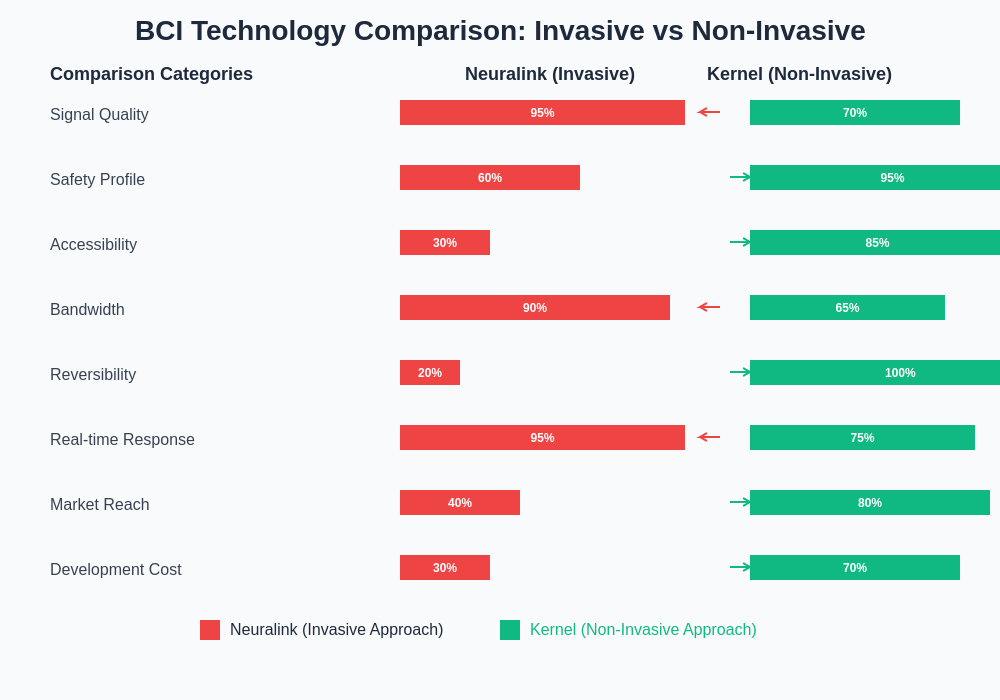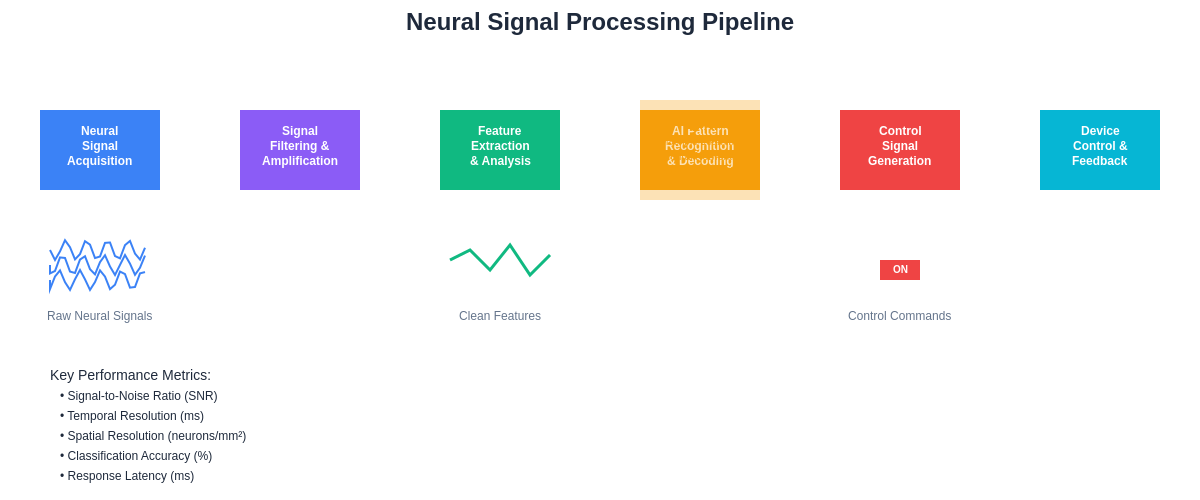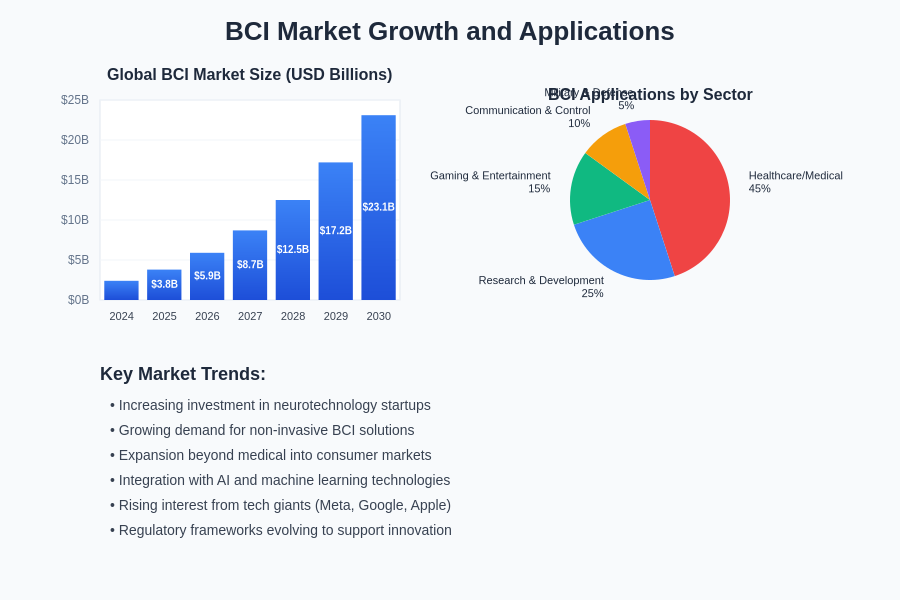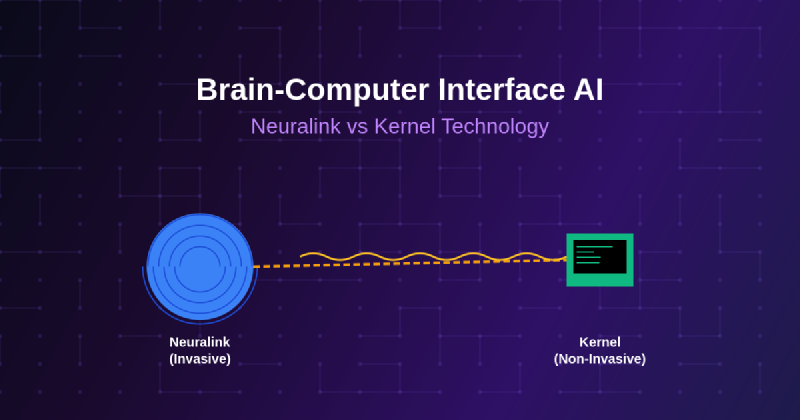The convergence of artificial intelligence and neuroscience has reached an unprecedented milestone with the development of sophisticated brain-computer interface technologies that promise to revolutionize human cognitive capabilities. At the forefront of this technological revolution stand two pioneering companies, Neuralink and Kernel, each pursuing distinct approaches to unlock the potential of direct neural communication with artificial intelligence systems. This comprehensive examination explores the fundamental differences, technological innovations, and long-term implications of these groundbreaking neural interface platforms.
Explore the latest developments in AI and neurotechnology to understand how these revolutionary technologies are reshaping our understanding of human-machine interaction. The race to develop practical brain-computer interfaces represents one of the most ambitious technological endeavors of our time, with implications that extend far beyond medical applications into the realm of human enhancement and artificial intelligence integration.
The Foundation of Brain-Computer Interface Technology
Brain-computer interface technology represents the culmination of decades of neuroscience research, advanced materials engineering, and artificial intelligence development. These sophisticated systems create direct communication pathways between the human brain and external devices, bypassing traditional sensory and motor channels that have historically limited human-machine interaction. The fundamental challenge lies in accurately interpreting neural signals while maintaining the safety and integrity of brain tissue over extended periods.
The development of practical BCI systems requires solving complex problems in signal processing, biocompatibility, power management, and data transmission. Neural signals are inherently noisy, variable, and subject to interference from multiple sources, making the extraction of meaningful information a formidable technical challenge. Additionally, the brain’s immune response to foreign materials necessitates careful consideration of implant design and materials selection to ensure long-term functionality without causing tissue damage or rejection.
Modern brain-computer interfaces leverage machine learning algorithms to decode neural activity patterns and translate them into actionable commands for external devices. These systems must adapt to individual neural patterns, compensate for signal degradation over time, and provide real-time feedback to users. The integration of artificial intelligence into BCI systems has dramatically improved their performance and usability, enabling more intuitive and responsive interfaces that can learn and adapt to user preferences and neural patterns.
Neuralink’s Invasive Approach to Neural Enhancement
Neuralink, founded by Elon Musk in 2016, has pursued an ambitious vision of high-bandwidth brain-computer interfaces through invasive surgical implantation of ultra-thin neural threads. The company’s approach centers on the development of flexible electrode arrays that can be precisely inserted into brain tissue using robotic surgical systems. These neural threads, each thinner than human hair, are designed to record and stimulate neural activity with unprecedented precision and minimal tissue damage.
The Neuralink system consists of multiple components working in concert to achieve seamless brain-computer communication. The neural threads connect to a small chip implanted beneath the skull, which processes and transmits neural signals wirelessly to external devices. This integrated approach eliminates the need for percutaneous connectors that have historically been sources of infection and mechanical failure in brain implants. The wireless communication capability enables users to interact with digital devices without physical constraints, opening possibilities for natural and intuitive control of computers, smartphones, and other connected devices.
Discover advanced AI capabilities with Claude to understand how artificial intelligence enhances brain-computer interface functionality through sophisticated signal processing and pattern recognition algorithms. The integration of AI into neural interface systems has been crucial for achieving the high-fidelity signal interpretation necessary for practical applications.
The surgical implantation process developed by Neuralink utilizes a custom-designed robotic system capable of inserting neural threads with micron-level precision while avoiding blood vessels and critical brain structures. This robotic approach addresses one of the major challenges in neural implant surgery, which has traditionally relied on manual techniques with limited precision and higher risk of complications. The robot’s computer vision system can identify optimal insertion sites and trajectories in real-time, significantly improving the safety and efficacy of the implantation procedure.
Neuralink’s technology platform has demonstrated remarkable capabilities in early trials, including the ability to decode motor intentions from paralyzed individuals and enable direct control of computer interfaces. The high-resolution neural recording capabilities of the system allow for the detection of subtle neural patterns that correspond to intended movements, thoughts, and even complex cognitive states. This level of neural signal fidelity opens possibilities for applications beyond motor control, including communication, memory enhancement, and cognitive augmentation.
Kernel’s Non-Invasive Neural Interface Solutions
Kernel, founded by Bryan Johnson in 2016, has pursued a fundamentally different approach to brain-computer interface development through non-invasive neural monitoring and stimulation technologies. The company’s philosophy centers on developing safe, accessible, and scalable brain interface solutions that do not require surgical intervention or permanent implantation. This approach prioritizes safety and broad applicability over the potentially higher performance capabilities of invasive systems.
The Kernel platform utilizes advanced optical and electromagnetic technologies to monitor and influence brain activity from outside the skull. Their flagship products include Kernel Flux, which uses optically pumped magnetometers to measure magnetic fields generated by neural activity, and Kernel Flow, which employs time-domain functional near-infrared spectroscopy to monitor brain blood flow and oxygenation patterns. These systems provide high-resolution temporal and spatial information about brain activity without the risks associated with surgical implantation.
The non-invasive approach employed by Kernel offers several significant advantages, including immediate applicability to healthy individuals, reversibility, and the ability to conduct large-scale studies without ethical concerns related to surgical procedures. The technology can be deployed in research settings, clinical environments, and potentially consumer applications without the regulatory hurdles and safety considerations that limit invasive brain interfaces to specific medical indications.
Kernel’s systems are designed for ease of use and broad accessibility, featuring wearable form factors that can be easily donned and removed by users. The company has focused extensively on user experience design, creating interfaces that are intuitive for both researchers and end-users. This emphasis on usability has enabled Kernel to conduct large-scale studies and gather extensive datasets on brain function across diverse populations and use cases.

The fundamental differences between invasive and non-invasive brain-computer interface approaches create distinct advantages and limitations for each technology platform. Understanding these trade-offs is essential for evaluating the potential applications and future development trajectories of these competing approaches.
Technical Performance Characteristics
The performance characteristics of brain-computer interface systems are typically evaluated across multiple dimensions, including signal quality, temporal resolution, spatial resolution, and bandwidth. Neuralink’s invasive approach provides superior signal quality due to direct contact with neural tissue, enabling the detection of individual action potentials and high-frequency neural oscillations that are attenuated or obscured in non-invasive recordings. This high signal fidelity translates to more precise control of external devices and the ability to decode complex motor intentions and cognitive states.
The temporal resolution of invasive systems like Neuralink exceeds that of non-invasive alternatives by several orders of magnitude, enabling real-time detection of neural events and rapid response to changing brain states. This temporal precision is crucial for applications requiring immediate feedback, such as prosthetic control or real-time cognitive enhancement. The bandwidth capabilities of invasive systems are also substantially higher, allowing for the simultaneous monitoring of thousands of individual neurons and the potential for bidirectional communication with brain circuits.
Kernel’s non-invasive approach, while providing lower signal fidelity than invasive systems, offers unique advantages in terms of spatial coverage and safety. The optical and magnetic sensing technologies employed by Kernel can monitor brain activity across large cortical areas simultaneously, providing insights into network-level brain function that may be difficult to achieve with localized invasive recordings. The non-invasive nature of these systems also enables continuous monitoring over extended periods without the risks associated with chronic implants.
The spatial resolution of both systems varies depending on the specific technology employed and the brain regions being monitored. Neuralink’s electrode arrays can achieve cellular-level resolution in the immediate vicinity of the implant, while Kernel’s systems provide millimeter-scale resolution across broader brain regions. These different resolution characteristics make the systems suitable for different types of applications and research questions.
Safety Profiles and Risk Assessment
Safety considerations represent a critical factor in the evaluation and adoption of brain-computer interface technologies. Invasive systems like Neuralink face inherent risks associated with surgical implantation, including infection, hemorrhage, tissue damage, and device failure. The long-term biocompatibility of implanted materials remains a significant concern, as chronic immune responses can lead to scar tissue formation and signal degradation over time. Additionally, the irreversible nature of surgical implantation creates ethical considerations regarding informed consent and the right to withdraw from experimental procedures.
Neuralink has invested heavily in addressing safety concerns through advanced materials development, surgical robotics, and biocompatibility testing. The company’s neural threads are manufactured from biocompatible materials designed to minimize immune responses and maintain functionality over extended periods. The wireless power and data transmission capabilities eliminate the need for percutaneous connections, reducing infection risk and improving long-term reliability. Extensive preclinical testing has been conducted to evaluate safety and efficacy across multiple animal models before proceeding to human trials.
Non-invasive systems like those developed by Kernel offer inherently superior safety profiles due to the absence of surgical intervention and permanent implantation. The optical and magnetic technologies employed pose minimal risk to users, with safety profiles comparable to existing medical imaging devices. The reversible nature of non-invasive interfaces allows users to discontinue use at any time without permanent consequences, addressing many of the ethical concerns associated with invasive procedures.
Enhance your research capabilities with Perplexity to access comprehensive information about brain-computer interface safety studies and regulatory requirements. Understanding the safety implications of different BCI approaches is crucial for informed decision-making about technology adoption and development priorities.
The regulatory pathways for invasive and non-invasive brain-computer interfaces differ significantly, with invasive systems requiring extensive clinical trials and FDA approval as medical devices, while non-invasive systems may qualify for less stringent regulatory oversight. This regulatory difference impacts the timeline for commercialization and the potential market reach of different technologies.
Clinical Applications and Medical Outcomes
The clinical applications of brain-computer interface technologies span a broad range of neurological conditions and medical needs. Invasive systems like Neuralink have demonstrated particular promise for individuals with severe paralysis, spinal cord injuries, and neurodegenerative diseases that affect motor function. The high-fidelity neural signals obtained from invasive recordings enable precise control of prosthetic devices, computer interfaces, and environmental control systems, potentially restoring significant functional independence to individuals with severe disabilities.
Early clinical trials with Neuralink technology have shown remarkable results in enabling paralyzed individuals to control computer cursors, type text, and interact with digital interfaces using only neural signals. These achievements represent significant advances in the quality of life for individuals with severe motor impairments and demonstrate the potential for brain-computer interfaces to restore communication and control capabilities. The bidirectional nature of the Neuralink system also opens possibilities for sensory restoration through direct neural stimulation.
Kernel’s non-invasive approach has found applications in cognitive assessment, mental health monitoring, and neurofeedback therapy. The ability to monitor brain activity continuously and non-invasively enables new approaches to understanding and treating psychiatric conditions, cognitive disorders, and developmental abnormalities. The technology has been used to study meditation, cognitive enhancement, and the effects of various interventions on brain function, providing insights that were previously difficult or impossible to obtain.
The broader applicability of non-invasive systems has enabled large-scale studies of brain function across diverse populations, including healthy individuals, elderly populations, and various clinical groups. This research has advanced our understanding of normal brain function and the mechanisms underlying various neurological and psychiatric conditions. The data generated by these studies contributes to the development of more effective treatments and interventions for brain-related disorders.
Technological Infrastructure and Ecosystem
The development of brain-computer interface systems requires sophisticated technological infrastructure spanning hardware engineering, software development, signal processing, and artificial intelligence. Neuralink has built an integrated technology stack that includes custom silicon chips, wireless communication protocols, signal processing algorithms, and user interface software. The company’s vertical integration approach enables tight optimization across all system components but requires significant investment in diverse technological capabilities.
The manufacturing requirements for Neuralink’s neural threads represent a significant technological challenge, requiring precision fabrication techniques and quality control processes that exceed those used in traditional electronics manufacturing. The company has developed specialized production facilities and processes to manufacture the ultra-thin electrodes at scale while maintaining the reliability and consistency required for medical applications. The integration of artificial intelligence into the signal processing pipeline has been crucial for achieving the performance levels demonstrated in clinical trials.
Kernel’s technology platform leverages advances in quantum sensing, photonics, and signal processing to achieve non-invasive brain monitoring capabilities. The company has developed proprietary optical systems, magnetic sensors, and data analysis algorithms optimized for non-invasive neural recording. The modular nature of Kernel’s approach enables easier integration with existing research and clinical infrastructure, potentially accelerating adoption and deployment.
The software ecosystems surrounding both platforms include sophisticated signal processing algorithms, machine learning models, and user interfaces designed to make brain-computer interface technology accessible to researchers and end-users. These software platforms must handle real-time signal processing, artifact rejection, feature extraction, and pattern recognition while providing intuitive interfaces for system configuration and data analysis.

The complex signal processing pipeline required for brain-computer interface systems involves multiple stages of data transformation, filtering, and analysis to extract meaningful information from noisy neural signals. Understanding this pipeline is crucial for appreciating the technological challenges and innovations in both invasive and non-invasive approaches.
Market Positioning and Commercial Strategy
The commercial strategies of Neuralink and Kernel reflect their different technological approaches and target markets. Neuralink has positioned itself primarily in the medical device market, focusing initially on applications for individuals with severe neurological conditions. The company’s regulatory strategy involves pursuing FDA approval for specific medical indications before expanding to broader applications. This approach requires significant investment in clinical trials and regulatory compliance but provides a clear pathway to market for high-value medical applications.
The high-performance capabilities of Neuralink’s invasive system command premium pricing in medical markets, where the potential benefits justify the costs and risks associated with surgical implantation. The company has also positioned itself for future applications in cognitive enhancement and human-AI integration, markets that could potentially be much larger than initial medical applications but face greater regulatory and ethical challenges.
Kernel has pursued a broader market strategy that includes research applications, consumer wellness products, and clinical tools. The non-invasive nature of their technology enables deployment across a wider range of use cases without the regulatory constraints that limit invasive systems. This approach potentially enables faster market entry and broader adoption but may face challenges in achieving the performance levels required for some applications.
The research market represents a significant opportunity for both companies, as neuroscience researchers require advanced tools for studying brain function and developing new treatments. Kernel’s non-invasive systems are particularly well-suited for research applications, enabling studies that would be ethically or practically impossible with invasive technologies. Neuralink’s high-performance invasive systems may find applications in specialized research settings where maximum signal fidelity is required.
Future Development Trajectories and Innovation
The future development of brain-computer interface technology will likely be shaped by advances in several key areas, including materials science, artificial intelligence, manufacturing techniques, and our understanding of brain function. Neuralink’s roadmap includes the development of higher-density electrode arrays, improved biocompatibility, and enhanced bidirectional communication capabilities. The company is also exploring applications beyond motor control, including memory enhancement, treatment of psychiatric conditions, and augmentation of cognitive abilities.
The integration of advanced artificial intelligence into brain-computer interface systems represents a particularly promising area of development. Machine learning algorithms are becoming increasingly sophisticated at interpreting neural signals, adapting to individual users, and providing predictive capabilities that enhance system performance. The combination of high-quality neural data with advanced AI has the potential to unlock applications that are currently beyond the reach of existing technologies.
Kernel’s development trajectory focuses on improving the sensitivity and resolution of non-invasive neural monitoring while expanding the range of measurable brain activities. The company is working on next-generation sensors, advanced signal processing techniques, and new applications in areas such as cognitive assessment, mental health monitoring, and brain-computer gaming. The goal is to make brain monitoring as ubiquitous and accessible as other health monitoring technologies.
The convergence of brain-computer interface technology with other emerging technologies, including virtual reality, augmented reality, and the Internet of Things, opens possibilities for new applications and user experiences. These integrations could enable seamless interaction with digital environments, enhanced learning and memory capabilities, and new forms of human-computer collaboration that were previously science fiction.
Regulatory Landscape and Ethical Considerations
The regulatory environment for brain-computer interface technologies is complex and evolving, with different requirements for invasive and non-invasive systems. Invasive devices like those developed by Neuralink must undergo rigorous clinical trials and obtain FDA approval as medical devices, a process that can take many years and require substantial investment. The regulatory pathway includes preclinical safety testing, investigational device exemptions, and multiple phases of human trials to demonstrate safety and efficacy.
Non-invasive systems like those developed by Kernel may qualify for different regulatory categories depending on their intended use and claims. Systems intended for research or wellness applications may face less stringent regulatory requirements than those making medical claims. However, the regulatory landscape is still developing as these technologies become more sophisticated and their applications expand.
Ethical considerations surrounding brain-computer interfaces include issues of privacy, consent, enhancement versus treatment, and the potential for creating social inequalities. The ability to monitor and potentially influence brain activity raises fundamental questions about mental privacy and the boundaries of personal autonomy. The development of these technologies requires careful consideration of their societal implications and the establishment of appropriate governance frameworks.
The long-term implications of brain-computer interface technology include questions about human identity, the nature of consciousness, and the relationship between humans and artificial intelligence. As these technologies become more sophisticated and widely deployed, society will need to grapple with fundamental questions about what it means to be human in an age of neural augmentation.
Economic Impact and Industry Implications
The brain-computer interface industry represents a rapidly growing market with significant economic implications across multiple sectors. The global BCI market is projected to reach billions of dollars in value over the next decade, driven by applications in healthcare, research, consumer electronics, and defense. The development of practical brain-computer interfaces has the potential to create entirely new industries and transform existing markets.
The healthcare applications of brain-computer interface technology could significantly reduce the costs associated with caring for individuals with neurological conditions while improving their quality of life and functional independence. The ability to restore communication and motor function to individuals with severe disabilities represents not only a humanitarian benefit but also substantial economic value in terms of reduced caregiving costs and increased productivity.
The research applications of brain-computer interface technology are accelerating scientific discovery and enabling new approaches to understanding and treating brain disorders. This acceleration of neuroscience research has implications for drug development, treatment protocols, and our fundamental understanding of brain function. The insights gained from brain-computer interface research are likely to have broad applications across multiple areas of medicine and science.
Consumer applications of brain-computer interface technology could create entirely new markets for entertainment, education, and productivity enhancement. The ability to interact with digital devices directly through neural signals could revolutionize how we work, learn, and entertain ourselves. However, the development of consumer brain-computer interface markets will depend on achieving appropriate levels of safety, performance, and cost-effectiveness.

The expanding market for brain-computer interface technologies reflects growing investment, advancing capabilities, and broadening applications across multiple industries. Understanding market dynamics is crucial for assessing the commercial viability and future impact of different technological approaches.
Comparative Analysis and Technology Assessment
A comprehensive comparison of Neuralink and Kernel technologies reveals complementary strengths and limitations that position each approach for different applications and user populations. Neuralink’s invasive approach provides superior signal quality, temporal resolution, and bandwidth capabilities, making it ideal for applications requiring precise control and high-performance neural interfaces. The technology is particularly well-suited for individuals with severe neurological conditions who can benefit significantly from the restored capabilities that justify the risks and costs associated with surgical implantation.
Kernel’s non-invasive approach offers superior safety profiles, broader applicability, and easier deployment, making it suitable for research applications, population studies, and potentially consumer markets. While the signal quality and bandwidth may be lower than invasive systems, the technology provides valuable insights into brain function and enables applications that would be impractical or impossible with invasive approaches.
The choice between invasive and non-invasive brain-computer interface technologies ultimately depends on the specific application requirements, user population, and risk-benefit considerations. Medical applications requiring high-performance neural control may justify the risks and costs of invasive systems, while research and consumer applications may be better served by non-invasive technologies. The future of brain-computer interfaces will likely include both approaches serving different market segments and applications.
The technological trajectories of both companies suggest continued innovation and improvement in their respective approaches. Advances in materials science, artificial intelligence, and manufacturing techniques will likely enhance the capabilities of both invasive and non-invasive systems, potentially blurring the performance distinctions between the two approaches over time.
Societal Transformation and Future Implications
The widespread adoption of brain-computer interface technologies has the potential to fundamentally transform human society in ways that are difficult to fully predict or understand. The ability to directly interface human brains with artificial intelligence systems could accelerate human cognitive capabilities, enable new forms of communication and collaboration, and blur the boundaries between human and artificial intelligence. These transformations could have profound implications for education, work, social interaction, and human identity.
The democratization of cognitive enhancement through brain-computer interfaces could reduce inequalities in intellectual capability while potentially creating new forms of digital divide based on access to neural augmentation technologies. The development of these technologies raises important questions about fairness, accessibility, and the potential for creating enhanced and unenhanced populations with different capabilities and opportunities.
The integration of brain-computer interfaces with artificial intelligence systems could enable new forms of human-AI collaboration that exceed the capabilities of either humans or AI systems alone. This symbiotic relationship could accelerate scientific discovery, enhance creative capabilities, and enable solutions to complex global challenges that require both human intuition and artificial intelligence processing power.
The long-term vision of brain-computer interface technology includes the possibility of uploading and downloading information directly to the brain, sharing experiences and memories between individuals, and achieving forms of collective intelligence that transcend individual cognitive limitations. While these capabilities remain largely speculative, the foundational technologies being developed by companies like Neuralink and Kernel represent important steps toward these transformative possibilities.
The development of brain-computer interface technology requires careful consideration of its societal implications and the establishment of appropriate governance frameworks to ensure that these powerful technologies are developed and deployed in ways that benefit humanity while minimizing potential risks and negative consequences. The decisions made today about the development and regulation of brain-computer interfaces will shape the future of human-AI interaction and the evolution of human capabilities.
Disclaimer
This article is for informational and educational purposes only and does not constitute medical, investment, or professional advice. The information presented is based on publicly available sources and current understanding of brain-computer interface technologies. Readers should conduct their own research and consult with qualified professionals before making decisions related to brain-computer interface technologies. The effectiveness, safety, and availability of these technologies may vary, and regulatory approval status may change. The author and publisher assume no responsibility for any consequences arising from the use of information contained in this article.
